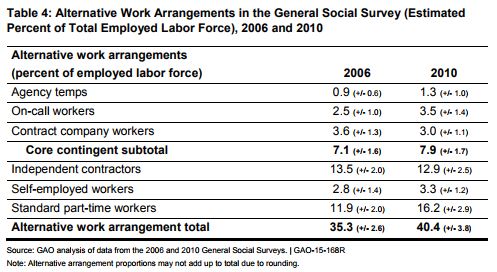The war for talent continues to rage, and 77% of CEOs are now concerned about talent/skills availability as a business threat, according to PwC’s Annual Global CEO Survey.
But where do CEOs turn to find this valuable and elusive talent everyone else wants too?
A New Source of Talent
As much as 40.4% of U.S. workers were counted in 2010 as involved in alternative work arrangements, including temps, self-employed, independent contractors and part-timers, according to the GAO. This trend is growing. A survey conducted by the Freelancers Union and the gig work platform Upwork predicts that by 2027 a majority of workers will do at least some freelancing.
Organizations are squandering an opportunity to optimize the performance of these contractors while they are working for you if you don’t fully engage temporary workers in the organization – not to mention that some of them may actually be interested in working for you permanently and could help you secure the skills you need to thrive!
Rather than ignoring freelancers, or making them feel like second-class citizens, leaders would reap the benefits of higher productivity, employee engagement and improved performance if they were to include temps in employee engagement programs, wherever appropriate.
Inclusion Reaps Benefits
I’ve been encouraging leaders for some time now to include temporary and contracted workers in as many employee programs as possible. I’m convinced it would make a significant difference for organizations!
Including them in onboarding initiatives will help them have a better understanding of the organization and its goals, and offers you the chance to welcome them and build on their enthusiasm for their new assignment. It’s also an ideal opportunity to familiarize them with your organization’s policies in the areas of health, safety, equality and discrimination to prevent misunderstandings in these areas while in your workplace.
Having freelancers as active participants in years of service, recognition and incentive programs helps builds teamwork, collaboration, engagement, and further insight into what, how and why some initiatives and behaviors produce greater results for the organization.
Create Meaning in Everyone’s Work
Don’t neglect the opportunity to give contractors a sense of purpose and meaning in their work as well. Ensure they’re listened to when they give advice, make suggestions about operational matters, or when they raise concerns. Utilize the same initiatives for improving employee engagement with permanent employees as another way to ensure commitment, productivity and innovation among temporary workers.
Finally, providing feedback and helping temps develop new skills, interests, and knowledge while on assignment with you will help you maximize their contribution and will position your company as a great place to work for other contractors with exceptional skills who likely have their choice of organizations for whom to work.
What leader wouldn’t want that from every member of their team?!
The many benefits of engaged employees will be lost if temp workers aren’t given the same attention and care as permanent employees – being denied a full voice, cut off from the strategic narrative, not having the opportunity to develop relationships with managers and not being treated with the same integrity as other workers.
Thankfully, that need not be the case.
Engagement is possible for contractors too when organizations put the effort in to get it right. An engaged contracted workforce will repay good treatment many times over in terms of productivity, innovation, reduced absenteeism, and greater retention.
And they may even want to work for you permanently!
This article originally appeared in a somewhat different form on OCTanner.com
